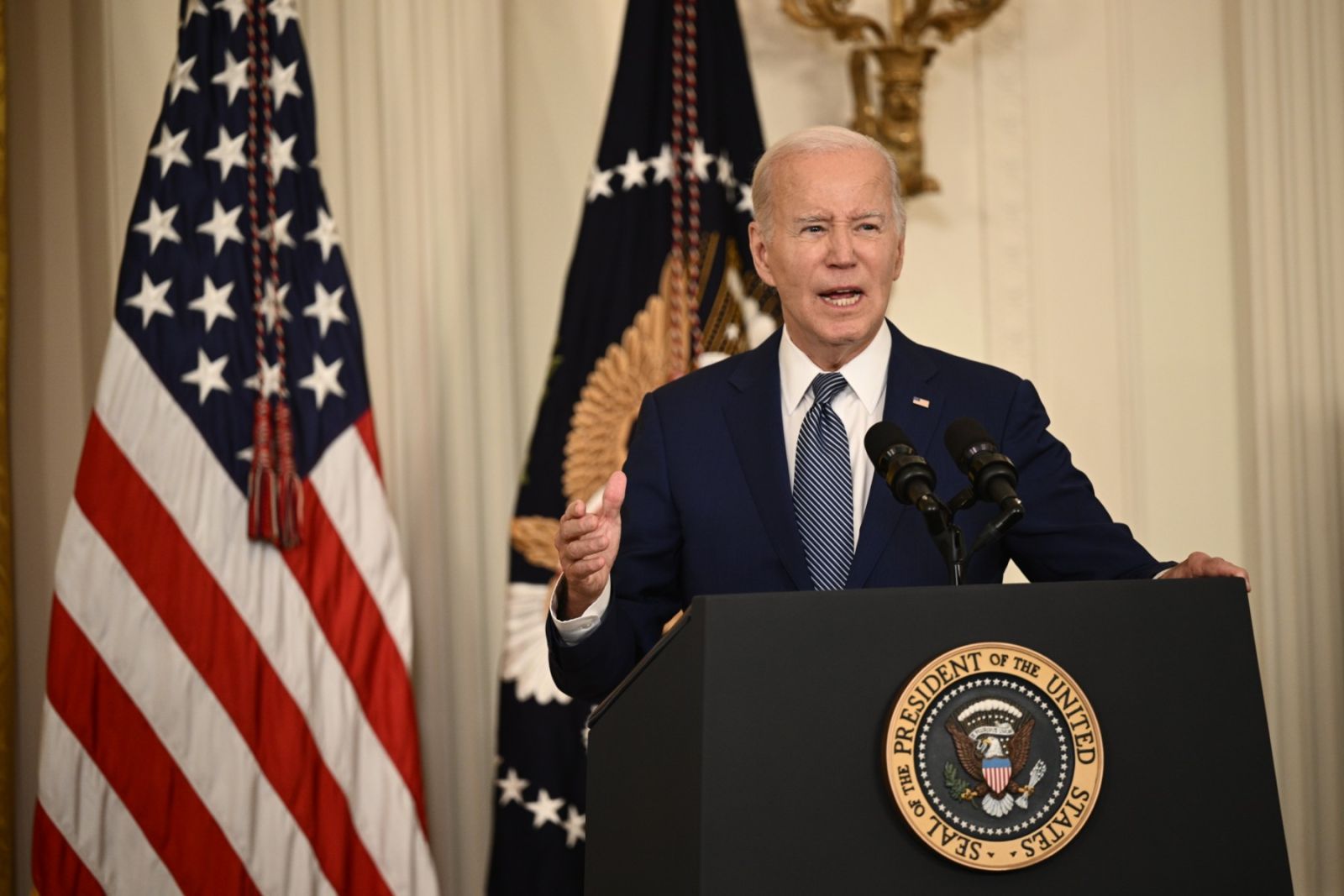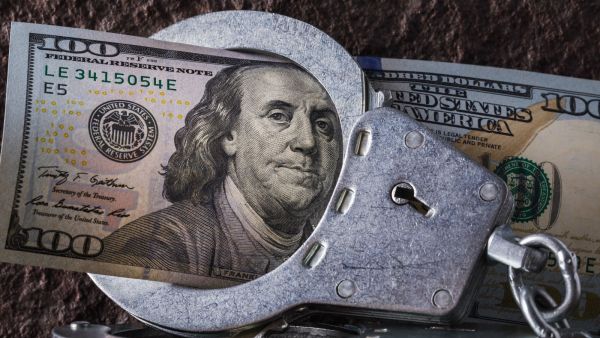Extreme polarization threatens a US government shutdown
ALBAWABA – Not even a year since the United States barely avoided a catastrophic default, and not unscathed, today, the world’s largest economy is once again on the verge of yet another major fiscal crisis that could cause a US government shutdown by October 1.
President Joe Biden's Democrats are engaged in a bitter feud with Republican rivals in Congress over spending bills, which, if not passed into law, may trigger a US government shutdown.
According to Agence France-Presse (AFP), the lawmakers have until midnight on September 30 to secure a deal, before funding for government service reportedly dries up.
Just a few months ago, Biden was able to strike a deal with Republican Speaker Kevin McCarthy to avoid a massive default in what was known back then as the ‘US debt ceiling crisis’.
Despite the deal, the US still managed to get its credit rating downgraded by at least two global financial and investment services firms, including Standard and Poor (S&P).

The threat of a US government shutdown comes on the heels of the US debt ceiling crisis four months ago, resulting in a deal between US President Joe Biden and Republican Speaker Kevin McCarthy, which the White House claims Republicans did not uphold - AFP
A US government shutdown would put at risk the finances of hundreds of thousands of workers at national parks, museums and other sites operating on federal funding. But it could also carry significant political risk for Biden as he runs for re-election in 2024, AFP reported.
The White House insists that House Republicans failed to support the spending levels agreed to between Biden and McCarthy. "A small group of extreme Republicans don't want to live up to the deal, so now everyone in America could be forced to pay the price," Biden said Saturday.
"It's time for Republicans to start doing the job America elected them to do."
Tensions are mounting around additional aid for Kyiv, according to AFP. Especially after Ukrainian President Volodymyr Zelensky visited Congress Thursday pleading for more weapons to help in the defence against invading Russian forces, 18 months into the war.
Both parties in the Senate support the $24 billion aid bill. But a handful of hardline Republicans in the House of Representatives are threatening to block it.
"I am not voting for one single penny to go to a war in Ukraine," congresswoman Marjorie Taylor Greene, a close ally of former president Donald Trump, said in a video posted on X, the former Twitter.
"I am America First, I work for the United States of America. I work for the American people."
Fellow House Republican Eli Crane echoed that view.
"People all over the country are so tired of funding others... We continue to spend and spend and spend, money that we don't have," he said in a video on social media.
Budgetary standoffs are typical, but a US government shutdown is not!
McCarthy is "in a very difficult position”, House Republican Mike Turner told ABC News on the talk show ‘This Week’ on Sunday.
“Holdouts [those blocking the bill or refusing to vote on it] keep saying to Kevin McCarthy: 'Don't bring bipartisan bills to the floor, we don't want you to use Democrat votes to try to avert a shutdown,'"
Budgetary votes in Congress regularly turn into a standoff, with each party using the prospect of a shutdown to obtain concessions from the other - until a solution is found at the last minute.
However, this year, the showdown is exacerbated by new levels of polarization on Capitol Hill, which makes the possibility of a US government shutdown unusually plausible.
Representative Matt Gaetz is a key Republican holdout on a stopgap spending measure.

The legislature is slated to vote on a bill to give billions in military aid to Ukraine as the US government shutdown crisis unfolds - Shutterstock
He said he’s ready for a multi-day US government shutdown if it gets demands such as conservative border policies into the federal budget, Bloomberg reported.
If the departments of labor and education “have to shut down for a few days as we get their appropriations in line, that’s certainly not something that is optimal,” Gaetz said on Fox News’s Sunday Morning Futures. “But I think it’s better than continuing on the current path we are [on] to America’s financial ruin.”
In the Senate, debate is led by two political heavyweights, Democratic majority leader Chuck Schumer and Mitch McConnell, the Republican minority leader.
In case no firm agreement is reached, lawmakers could turn to a short-term funding measure, called a continuing resolution. That would offer temporary respite to lawmakers to find common ground. Especially if it is unlikely that lawmakers would be able to resolve the issue in time.
Representative Jim Jordan said that, in principle, “everyone wants to get the 12 appropriation bills done” but “frankly, we’re not going to get it done in the next six days.”
“So, there’s going to have to be some stopgap measure,” the Ohio Republican told Fox News, though Republicans would have to “win something” in passing a so-called continuing resolution.
First the US debt ceiling crisis, now the US government shutdown
As part of the deal averting default, Democrats agreed to limit certain spending in hopes the budget would be approved smoothly.
"A deal is a deal," White House Press Secretary Karine Jean-Pierre said, blaming Republicans for the risk of a "needless shutdown", as reported by AFP.
Notably, if a US government shutdown were to materialize by October 1, low-income families may not receive their food aid checks, air traffic could be disrupted and national parks could close.
"Non-essential" civil servants will be asked to stay home, and their paychecks will be stopped and only sent out to them when the problem is resolved.
The United States has lived through four shutdowns since 1976. Most lawmakers say they oppose a repeat – but avoiding one might be difficult, the France-based news agency reported.

The ongoing US government shutdown crisis is amplified by the earlier US debt ceiling crisis, just four months ago, with financial services firms, including S&P, warning of further financial turmoil as they downgraded the United States' credit rating - Shutterstock
"I don't want to see a shutdown," House Republican Tony Gonzales told CBS News on Sunday. "But there is no doubt in my mind that the country is headed for a shutdown, and everyone should prepare as such."
The longest US government shutdown was in late 2018. It lasted five weeks and cost the American economy $3 billion, according to congressional figures, as reported by AFP.
Representative Garret Graves floated a new funding option on Saturday after far-right lawmakers rejected a 31-day continuing resolution that cuts spending and includes the Republicans’ border bill.
With a narrow House majority, the small group of Republican holdouts can upend any proposed stopgap measure, according to Bloomberg. And even though any plan passed by the House is unlikely to pass quorum, or ‘muster’, in the Democratic-led Senate, Republicans view the House version as a way to start negotiations with a lower spending threshold.










